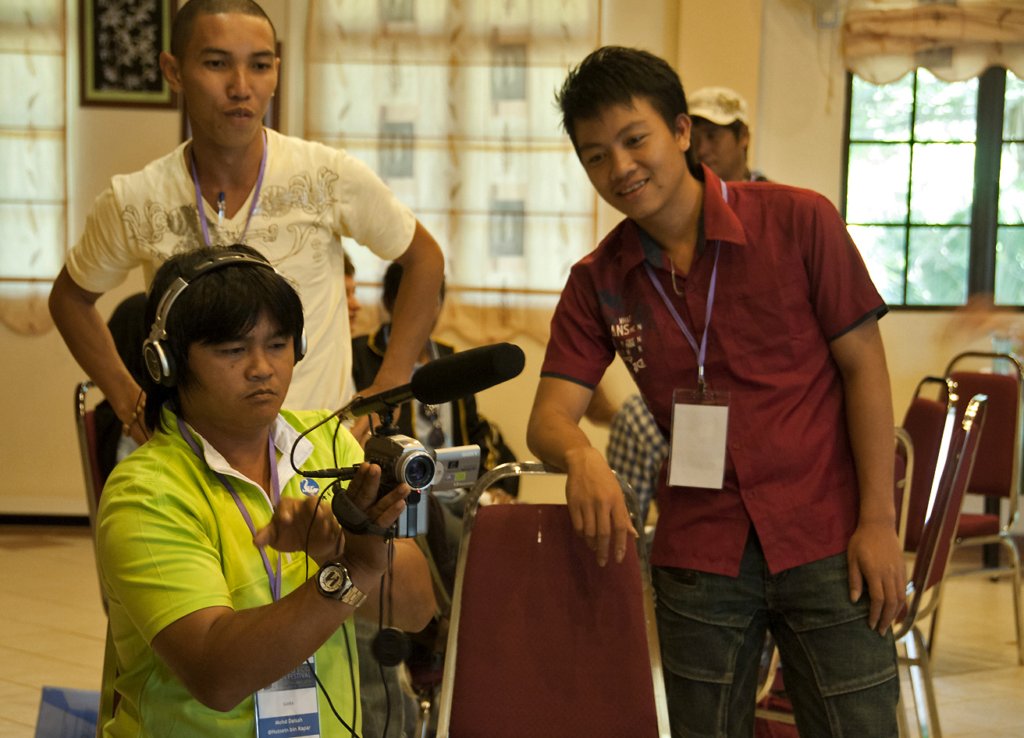By Marina Aman Sham | GDF Communications Director
In our previous update, we wrote about plans to publish a booklet on the oral histories of Ulu Papar. Plans and progress continues: translating interviews to enable the production of a multilingual publication (quite possibly into four languages: Dusun, Japanese, Malay and English), designing the booklet and complementary posters as well as discussing with local KadazanDusun language experts to engage in a collaboration to ensure language accuracy of these publications.
Let us take a step back and look at the skill set needed to reach this point. In particular, that of one specific tool: participatory video. Participatory Video (PV) is described as “a set of techniques to involve a group or community in shaping and creating their own film as it enables a group or community to take action to solve their own problems and also to communicate their needs and ideas to decision-makers and/or other groups and communities” (see here). It is through the use of this very tool that indigenous researchers in Ulu Papar and Bundu Tuhan have unearthed, documented and showcased stories of their livelihoods and culture, through interviews with community elders.
Participatory video, locally more commonly known by the generic term 'community filmmaking', has become a popular method to engage communities in conservation efforts particularly among local research teams in Bundu Tuhan and Ulu Papar. Being trained in PV has enabled these two communities to collaborate in applied research initiatives, attaining insight into their interconnectedness with their traditional territories and then using their filmmaking skills to showcase their stories. Several short films were developed, including a three-part documentary-style series showcasing the Buayan-Kionop communities’ connection with their land and resources, the issues that threaten their access to these resources and potential solutions that balance the conservation agenda of protected areas with the sustainability of community livelihoods. The indigenous Dusun in Bundu Tuhan produced a film about their cultural and traditional heritage to ‘encourage everyone living in this generation to work together and begin taking the steps needed to conserve and protect the heritage of our ancestors, especially our culture and our traditions.’
In 2011 and 2012, community researchers from Ulu Papar were invited to pass on their knowledge in filmmaking through peer-to-peer sharing and learning sessions held as part of the SUARA community filmmaking programme, an important component of the Borneo Eco Film Festival. Through the sessions, they reached out to indigenous and local communities from around Sabah, encouraging them to discover the power of storytelling and filmmaking. We are truly inspired that participatory video is a concept that continues to grow in Sabah, catalysed by the annual Film Festival's spotlight on community filmmaking.
Photo by Inanc Tekguc (BEFF, 2011)
Links:
Project reports on GlobalGiving are posted directly to globalgiving.org by Project Leaders as they are completed, generally every 3-4 months. To protect the integrity of these documents, GlobalGiving does not alter them; therefore you may find some language or formatting issues.
If you donate to this project or have donated to this project, you can receive an email when this project posts a report. You can also subscribe for reports without donating.
